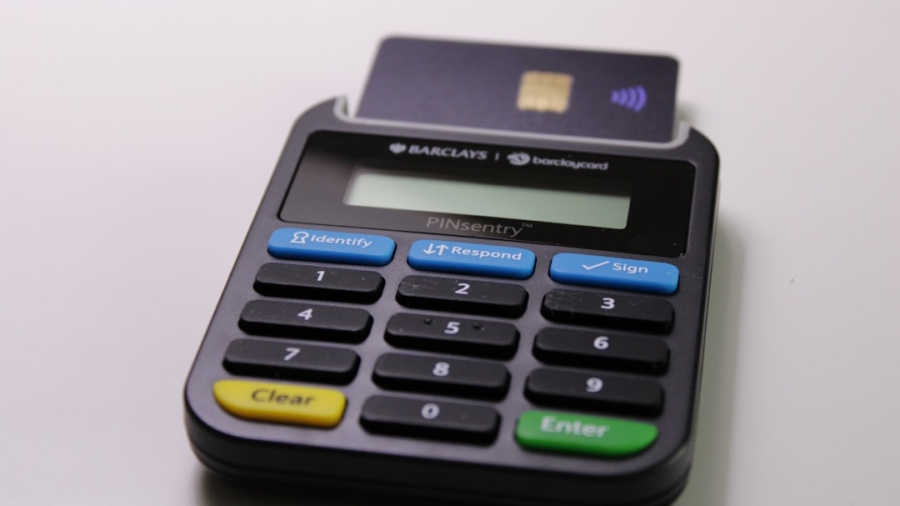The evolution of digital banking has transformed the financial landscape, marking a significant shift from traditional banking methods to a more streamlined, technology-driven approach. The advent of the internet and mobile technology has enabled banks to offer services that are not only more accessible but also more efficient. Customers can now manage their finances from the comfort of their homes or on the go, using smartphones and computers.
This convenience has led to a surge in digital banking adoption, with millions of users worldwide opting for online banking services over conventional brick-and-mortar institutions. The rise of digital banking is also closely tied to the increasing demand for personalized financial services. Fintech companies have emerged as key players in this space, leveraging advanced algorithms and data analytics to provide tailored solutions that meet individual customer needs.
For instance, many digital banks now offer budgeting tools, spending insights, and investment advice based on users’ financial behaviors. This level of personalization not only enhances customer satisfaction but also fosters loyalty, as users feel more in control of their financial journeys. As a result, traditional banks are compelled to innovate and adapt to this new reality, leading to a competitive environment that benefits consumers.
Key Takeaways
- Digital banking has seen a significant rise in popularity, offering customers convenient and accessible banking services.
- Real-time payments provide benefits such as instant fund transfers, improved cash flow, and reduced transaction costs for businesses.
- Small businesses can benefit from real-time payments by gaining quicker access to funds, improved cash flow management, and increased customer satisfaction.
- Government and regulatory bodies play a crucial role in ensuring the security, efficiency, and fairness of real-time payment systems.
- Developing countries are increasingly adopting real-time payment systems to improve financial inclusion, reduce cash dependency, and drive economic growth.
The Benefits of Real-Time Payments
Real-time payments represent a significant advancement in the way transactions are conducted, offering immediate fund transfers that enhance the overall efficiency of financial operations. Unlike traditional payment methods that may take several days to process, real-time payments allow individuals and businesses to send and receive money instantly, regardless of the time or day. This immediacy is particularly beneficial in situations where time is of the essence, such as emergency payments or urgent business transactions.
The ability to access funds instantly can alleviate cash flow issues for businesses and provide peace of mind for consumers. Moreover, real-time payments contribute to greater financial inclusion by enabling individuals who may not have access to traditional banking services to participate in the digital economy. For example, gig economy workers can receive payments immediately after completing a job, allowing them to manage their finances more effectively without waiting for delayed payment cycles.
This immediacy can empower users to make timely decisions regarding their spending and investments, ultimately fostering a more dynamic economic environment. Additionally, real-time payments reduce the reliance on cash transactions, promoting safer and more traceable financial practices.
The Impact on Small Businesses

Small businesses stand to gain significantly from the implementation of real-time payment systems. One of the most pressing challenges faced by small enterprises is managing cash flow, which can be particularly volatile due to delayed payments from clients or customers. With real-time payments, small business owners can receive funds immediately upon completion of a sale or service, allowing them to reinvest in their operations without delay.
This immediate access to capital can be crucial for maintaining inventory levels, paying employees, or covering unexpected expenses. Furthermore, real-time payments can enhance customer satisfaction and loyalty. When customers are offered the option to pay instantly through various digital channels—such as mobile wallets or online payment platforms—they are more likely to complete transactions promptly.
This convenience not only improves the overall shopping experience but also encourages repeat business. Additionally, small businesses can leverage real-time payment data to gain insights into customer behavior and preferences, enabling them to tailor their offerings and marketing strategies more effectively.
The Role of Government and Regulatory Bodies
Government and regulatory bodies play a pivotal role in shaping the landscape of digital banking and real-time payment systems. As these technologies evolve, regulators must ensure that they are implemented in a manner that protects consumers while fostering innovation. This balance is crucial; overly stringent regulations can stifle growth and limit the potential benefits of new technologies, while lax oversight can lead to increased risks of fraud and financial instability.
In many countries, regulatory bodies are actively working to establish frameworks that promote interoperability among different payment systems. For instance, initiatives like the Faster Payments Service in the UK and the RTP network in the United States aim to create seamless connections between various banks and payment providers. These efforts not only enhance the efficiency of real-time payments but also encourage competition among financial institutions, ultimately benefiting consumers through lower fees and improved services.
Additionally, regulators are increasingly focusing on cybersecurity measures to protect users from potential threats associated with digital transactions.
Real-Time Payments in Developing Countries
The implementation of real-time payment systems in developing countries presents unique opportunities and challenges.
For example, platforms like M-Pesa in Kenya have revolutionized how people conduct financial transactions by allowing users to send and receive money via mobile phones without needing a bank account.
This accessibility has empowered individuals to participate in the economy, facilitating commerce and improving livelihoods. However, the adoption of real-time payments in developing countries is not without its hurdles. Issues such as inadequate internet connectivity, lack of digital literacy, and regulatory challenges can impede progress.
Governments and organizations must work collaboratively to address these barriers by investing in infrastructure development and promoting financial education initiatives. By doing so, they can create an environment conducive to the growth of digital banking and real-time payment systems, ultimately driving economic development and improving quality of life for citizens.
The Future of Traditional Banking

As digital banking continues to gain traction, traditional banks face an existential challenge: how to remain relevant in an increasingly digital world. Many established financial institutions are recognizing the need to adapt their business models by embracing technology rather than resisting it. This shift often involves investing in digital platforms that offer enhanced user experiences while maintaining the trust and security that customers expect from traditional banks.
In addition to enhancing their digital offerings, traditional banks are also exploring partnerships with fintech companies to leverage innovative technologies such as artificial intelligence and blockchain. These collaborations can lead to improved operational efficiencies and new product offerings that cater to evolving consumer demands. For instance, banks may utilize AI-driven chatbots for customer service or blockchain technology for secure transaction processing.
By embracing these advancements, traditional banks can position themselves as competitive players in the digital landscape while continuing to serve their existing customer base.
Security and Fraud Prevention
As digital banking and real-time payment systems proliferate, concerns about security and fraud prevention have become paramount. Cybersecurity threats are evolving rapidly, with hackers employing increasingly sophisticated techniques to exploit vulnerabilities in digital platforms. Financial institutions must prioritize robust security measures to protect sensitive customer information and maintain trust in their services.
To combat these threats, banks are investing heavily in advanced security technologies such as biometric authentication, machine learning algorithms for fraud detection, and end-to-end encryption for transactions. For example, biometric authentication methods—such as fingerprint scanning or facial recognition—provide an additional layer of security that is difficult for fraudsters to bypass. Furthermore, machine learning algorithms can analyze transaction patterns in real time, flagging suspicious activities for further investigation before they escalate into significant losses.
By adopting a proactive approach to security, financial institutions can mitigate risks associated with digital banking while ensuring a safe environment for their customers.
The Global Adoption of Real-Time Payments
The global adoption of real-time payments is gaining momentum as countries recognize the benefits of instant transactions for both consumers and businesses alike. Various regions are implementing their own real-time payment systems tailored to local needs while also striving for interoperability on a global scale. For instance, initiatives like the European Union’s SEPA Instant Credit Transfer scheme aim to facilitate cross-border transactions within Europe seamlessly.
Countries such as India have also made significant strides in adopting real-time payment systems through platforms like Unified Payments Interface (UPI), which allows users to transfer money instantly between bank accounts using mobile devices. This widespread adoption has not only improved transaction efficiency but has also contributed to greater financial inclusion by enabling millions of people to access banking services through their smartphones. As global commerce continues to expand, the demand for efficient payment solutions will only increase.
The ongoing development of real-time payment networks will likely lead to further innovations in cross-border transactions, reducing costs and processing times while enhancing security measures. As nations collaborate on creating standardized frameworks for real-time payments, we may witness a future where instant transactions become the norm across borders, fundamentally reshaping how we conduct business on a global scale.
In the rapidly evolving landscape of global finance, real-time payments are increasingly becoming the standard, offering unparalleled speed and efficiency. This shift is not only transforming how transactions are conducted but also influencing related technological advancements. For instance, the integration of real-time payment systems with advanced content optimization tools is becoming more prevalent. An article that delves into the intersection of technology and optimization is Boost Your Content with NeuronWriter: SEO & NLP Optimization. This piece explores how cutting-edge tools can enhance digital content, much like how real-time payments are enhancing financial transactions, by leveraging the latest in SEO and NLP technologies to optimize content delivery and engagement.
FAQs
What are real-time payments?
Real-time payments refer to electronic transactions that are processed and settled instantly, providing immediate access to funds for the recipient.
Why are real-time payments becoming the global standard?
Real-time payments are becoming the global standard due to their ability to provide faster, more convenient, and efficient payment processing, leading to improved customer satisfaction and business operations.
What are the benefits of real-time payments?
Some benefits of real-time payments include faster access to funds, improved cash flow management, reduced risk of fraud, and enhanced customer experience.
How do real-time payments impact businesses and consumers?
Real-time payments can benefit businesses by improving cash flow, reducing payment processing costs, and enhancing customer satisfaction. For consumers, real-time payments offer greater convenience, faster access to funds, and improved financial management.
What are some examples of real-time payment systems?
Examples of real-time payment systems include the Faster Payments Service (FPS) in the UK, the Real Time Gross Settlement (RTGS) system in India, and the Faster Payments System (FPS) in Hong Kong. Additionally, there are global initiatives such as the Single Euro Payments Area Instant Credit Transfer (SEPA Instant Credit Transfer) in Europe.

